February 7, 2012
Dear Friends,
First, I would like to thank all of you for your past and continued support, without which the events described in this letter would not have occurred.
I am writing to you on the flight back from Kenya. Images of the trip cascade through my head, as they will for months to come. Our traveling party included me, Drew Sauer, Denver lawyer Ralph Ogden, and Max Van Rensselaer, a college student from Los Angeles. We left Denver on January 13 with 150 gloves, more than 20 dozen balls, numerous bats, helmets, six sets of bases, dozens of used youth baseball shirts and other gear, filling more than nine large bags and weighing more than 450 pounds. Much of our personal gear, comprising another 200 pounds, would also be given away.
On Saturday the 15th, we visited two notorious Nairobi slums. There, children in rags played on garbage piles or picked through trash. Open trenches carried flows of sewage. Destitute women and children lined the alleys and doorways. Many said “jambo” or “hello”, exchanged handshakes or high fives and posed for pictures. Deep in the slum, we met Peter and Jane, brother and sister orphans who live with their guardian, 23-year-old Ruth, in a tiny apartment no bigger than 8 x 10 feet. It is divided by a curtain into a living area and a bedroom that the three share. The “kitchen” is a pot set on a burner in a corner. Water from a municipal well is carried by hand and stored in plastic bottles or basins that line the cramped walkway between apartments. Ruth's scant wages from her tiny hair salon in the heart of the slum, along with contributions from locals, provide food for the children or school fees, but there is not enough money for both. Without food, they are too hungry to function in school.
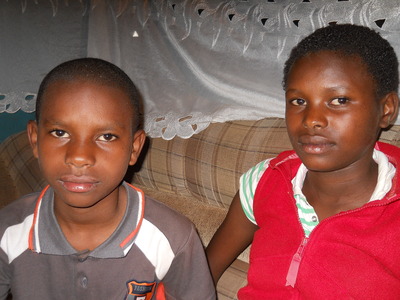
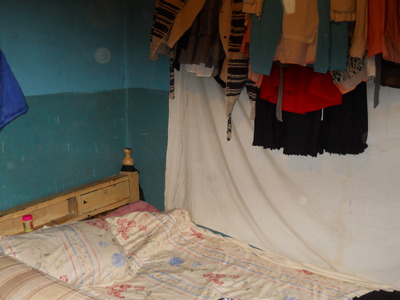


In an even grittier slum nearby, known as Ngomongo, 22-year-old Marcy, who looks all of 15, tries to support herself and two younger brothers in another tiny apartment where the three of them sleep in a space that cannot be more than 3 feet by 8 feet. Next door lives a prostitute with small children. As we made our way through the filthy and labyrinthine alleys, our guides pointed out shabby buildings where children as young as ten are prostituted for 20 shillings (about twenty-five cents). There is no indoor plumbing. Toilets, at best, are pits in the ground. A river of sewage bisects the ghetto.
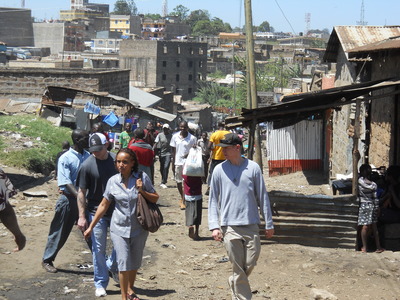
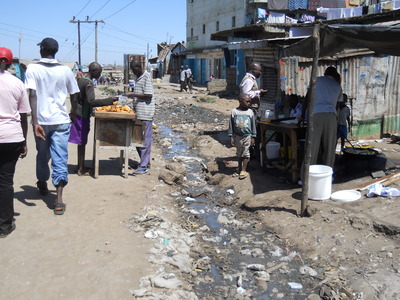
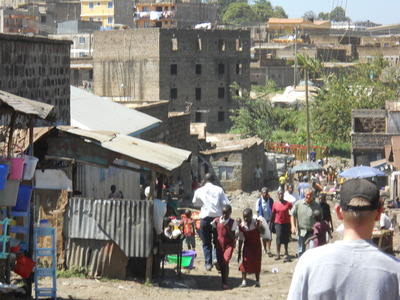

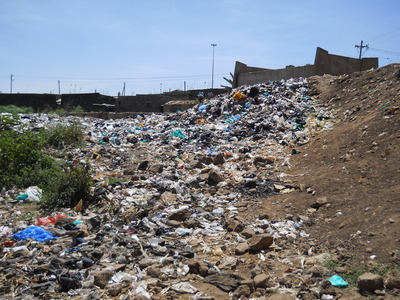
Marcy is a slightly built, bright, energetic, courageous and tireless young woman who managed to complete high school and learn fluent English despite overwhelming obstacles. She and her brothers come from Kisumu, in western Kenya, but ended up in the slums of Nairobi after their parents and other adult relatives died of HIV/AIDS. Marcy does not eat until her brothers have been fed. She should be pursuing further education so she can earn a decent living, but there is no money to feed the family or pay tuition.
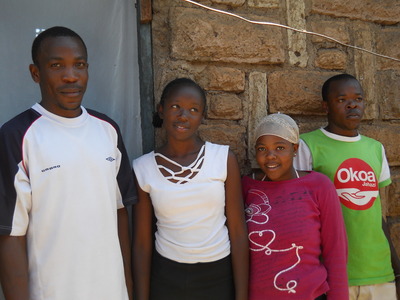
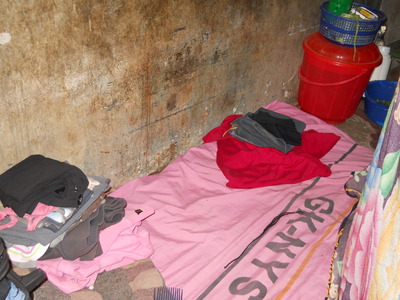
Our guide's wife, Selena, who lives modestly in a small four-room flat where there is running water three days a week, with her husband, two children, and an orphaned teenager they have taken in, works with her friend Margaret and others in her community to provide guidance and support to Ruth and Marcy. They asked for our help. Selena told me “Tourists come here and go to fancy hotels and go on safari to see wildlife,” and in a voice tinged with sadness, “but this is Kenya.”
On Monday the 16th, we drove five plus hours from Nairobi to Ahero. Our first stop was at the tiny crossroads concession stand where our friend Margaret Obura, her older sister Eveline and Eveline's two young children, Clifford and Junior live. Margaret is the 19-year-old we met two years ago while buying Cokes. We struck up a conversation. She was delighted by the fact that funny-sounding white guys treated her with dignity and respect, and we became friends. We arranged for a donor to sponsor Margaret's $1400 to $2000 yearly school fees and expenses to attend a three-year pharmacy technician college in Nyabondo, an hour's drive from her home. This goal had been beyond her wildest dreams.
When we arrived in Ahero on January 16th, we knew that Margaret had come home to greet us, and we knew she would be waiting. Margaret and Eveline greeted us with the most radiant smiles one could imagine. Margaret showed no signs of the worn-down young girl we met in February of 2010. She was absolutely glowing.
Margaret hoped we could visit her at school. Late on Sunday the 23rd, we drove up to Nyabondo. The school that Margaret attends is on a beautiful campus in a lush area set high on a hillside. It has tidy classroom buildings, labs and dormitories. It is lovely and uplifting—a perfect setting for finding a new life. Margaret proudly showed us all the campus facilities, took us to her dorm room and introduced us to her roommate, her friends and her desk mates. Her smile lit up the campus and the bounce in her step was indescribable. The principal invited us in for a visit. The difference between the young lady who strolled with us around that tranquil campus suffused in the late afternoon equatorial sunshine was like night and day from the girl who got treated like dirt running that concession stand from before dawn to after dark. The future will reveal the contributions that Margaret, in turn, will make to her community and her fellow Kenyans. That's what I'm talking about!
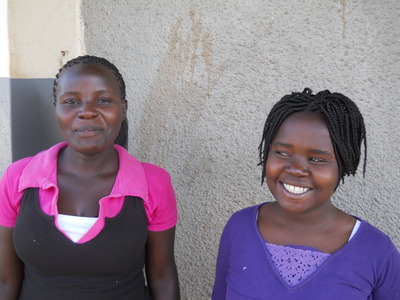
On Monday the 16th we began having baseball clinics at secondary schools around the Ahero area. In the next eleven days, we would play baseball at nine schools and an orphanage in Ahero (two of them twice), one school in Kakamega, and one school in the Masai Mara (three visits). On Saturday we held an all-day tournament, with eight teams and nine games. Many of the students shed their school shoes and played in bare feet. Two girls at the tournament, on opposing teams, took turns using a shared pair of shoes. Many of the players are orphans.
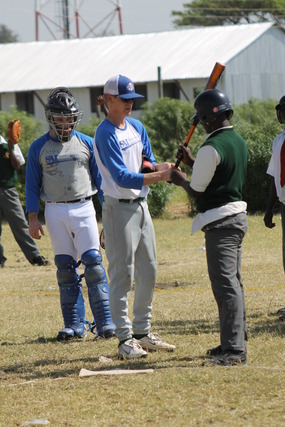
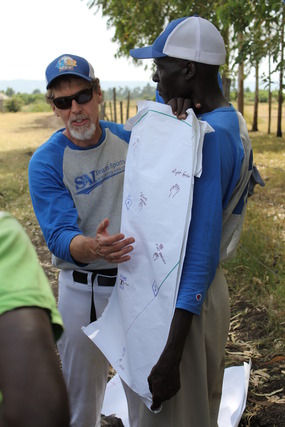
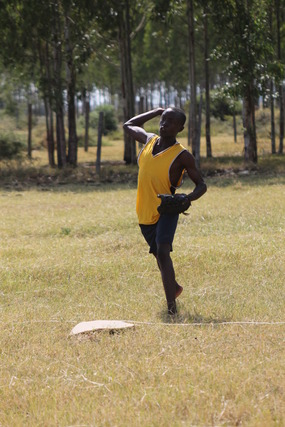



Several of the secondary schools were adjacent to primary schools. At their breaks, hundreds of younger students would surround the field and practically mob us, giggling as we exchanged high-fives with them, took their pictures and showed them the results, made faces, and they touched our skin and hair.
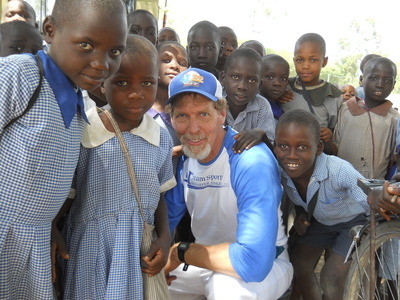
Some of the kids had yellow patches in their hair and distended abdomens that characterize worms and malnutrition. Some of them were listless.
Most were active, bright, and inquisitive. Kids in school wore school uniforms, many of which were torn or tattered. Neighborhood kids typically wore rags. They played with bottle caps, discarded plastic water bottles, bits of trash and rocks, and makeshift soccer balls made of trash bound together.
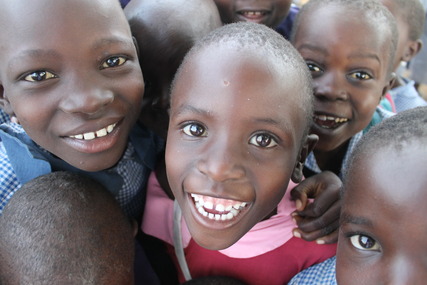
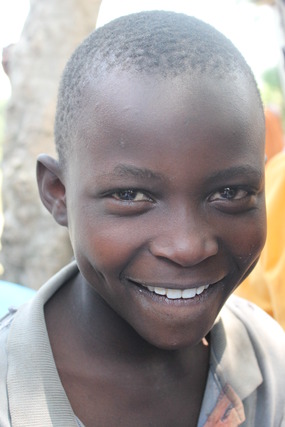
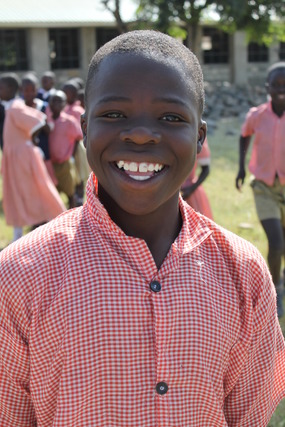
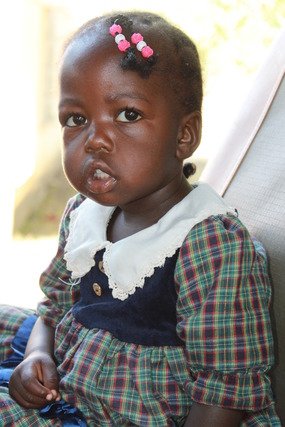
Two haunting, enduring images that I cannot, and do not want to shake, are these. At one of the poorer schools, a beautiful little girl of about ten came prancing up with a big smile on her face, wearing a makeshift necklace that she moved to her head as a kind of tiara. This jewelry was made from a scrap of tarnished wire and featured an orange plastic bottle cap stuffed with a tail of trash. It took just about all of the emotional strength I could muster to keep from breaking down and sobbing. No little girl should have to adorn herself with rubbish, yet her imagination shined through.
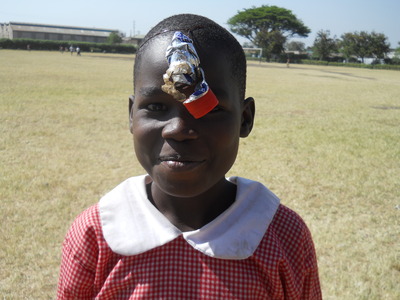
At Pastor Joshua's village, another little girl, perhaps 11, constantly clutched the lid of a shoe polish tin—her only possession.
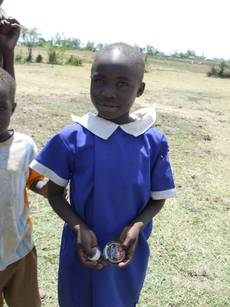
I must tell you about the older high school boys in Pastor Joshua's village. There are four of these young men who take a great deal of responsibility in helping care for the numerous younger children. On all the occasions I have been there, these older guys show a tremendous amount of patience, dedication and tenderness to the younger kids. For example, they made sure that all the little ones were fed before they took a plate for themselves. Three of these boys are able to attend school because of our sponsorship.
You have to understand that this is a culture where the women are expected to do all the work and a lot of the men do not seem to do much of anything.
A highlight of the trip was Kobura Girls Secondary School on Wednesday afternoon. The principal seemed quite strict and somewhat skeptical. A lot of the students are orphans and she was protective. To break the ice, I took the principal out behind the school and played a little catch with her before the students came out. I got distracted during one of her return throws and the ball hit me right in the nose. I prayed it wouldn't start bleeding so I could pretend it didn't hurt.
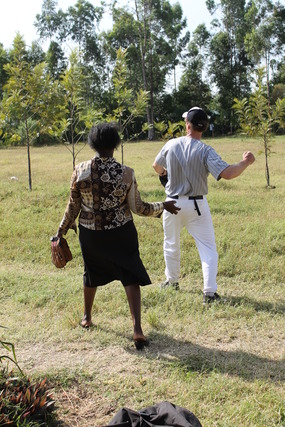
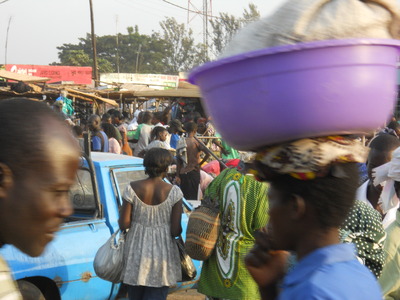
When the girls came out, the principal had them stand at attention while one of the pastors led a little prayer service. As soon as the somber prayer service ended and I was introduced, I waded into the ranks of the girls and announced that we always begin with a high five. The 64 girls erupted in giggles, making sure everyone got a high five, and the fun was on.
The air was filled with happy chatter and laughter as the girls played catch and then threw each other grounders and pop-ups. Then it was time to try some hitting. Words like cute, adorable and precious cannot begin to describe these girls. They were so earnest and tried so hard, and smiled and laughed incessantly. One girl singled out Max to play some catch on the side (later the source of much teasing by the rest of us). Another struck up a friendship with Ralph. We later learned she was so excited that she called her parents in Mombasa to tell them how much fun the baseball was.
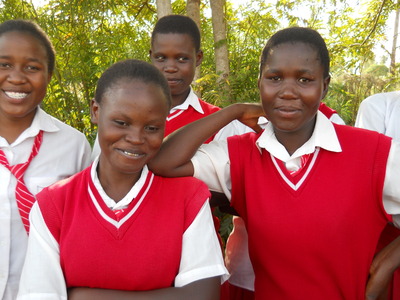
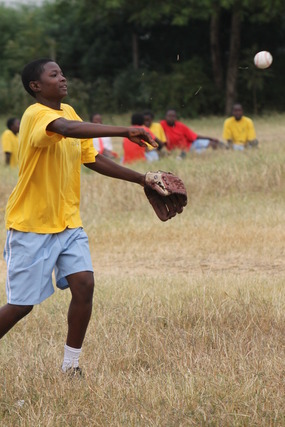
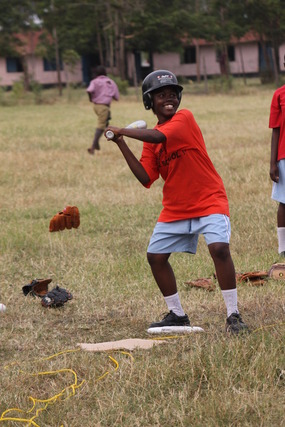
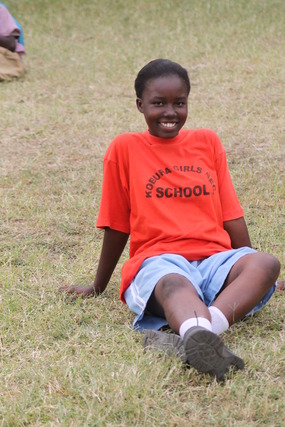
With the indulgence of their teacher, who was very excited about how much fun the girls were having, we stayed more than a half hour beyond the allotted time. They begged us to come back again. We rearranged our Friday schedule to do that. On Friday, one of the girls tried to make a tag play by bouncing the ball off the top of another girl's helmetless head. Everyone burst out laughing. I left a piece of my heart at Kobura and I cannot wait to see them next year.
The harsh conditions, challenges, responsibilities and oppression of being a young woman in Kenya are hard for us to fathom. One can only imagine the boost they receive from having this kind of fun.
Empowering women is a theme that we constantly reinforce. Some of the schools field only boys. We discourage that and strongly encourage the girls to participate. During Saturday's tournament, the Kanyagwal coed team fell behind. The boys were batting out of turn and not letting the girls hit. I made them put the girls up to bat. One after another, the girls got solid hits, resulting in a come-from-behind victory. I emphatically pointed out this turn of events to the boys as it was occurring. Later on, I was telling the boys, “don't make me remind you that the girls won the game for you.” One of the girls said simply: “Remind them!”

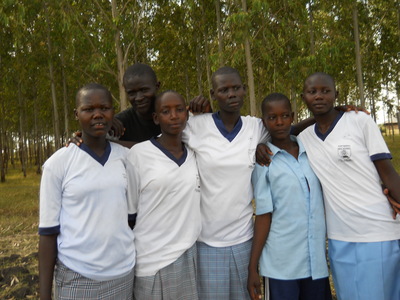
We are finding a number of kids who have an intense passion for the game and an amazing amount of heart. One of these is a kid named Alex, from Kanyagwal Secondary School. We met Alex last year when he showed us his chicken coop next to the school. He was obviously delighted that we took an interest. This year, he was the first to greet us. He has learned a lot about the game and is very helpful in teaching his teammates.
Alex pitched the whole practice in blistering heat, and at the end he was pitching to Drew. While chasing a pop-up, he and Max collided and Alex got two deep cuts under his lip. I worked on him for about twenty minutes, checking his teeth and the inside of his mouth, and trying to stop the bleeding, clean the wounds and apply some butterfly bandages. It was obvious that he needed to be taken to the clinic for stitches. These were nasty cuts and his lips were badly swollen. As I walked him off the field holding a compress on his face, headed for the clinic, he said: “Saturday [the tournament day]—will I be able to play?” Sure enough, he showed up on Saturday and played his heart out. The first thing he said to Drew was “I was not finished pitching to you.”
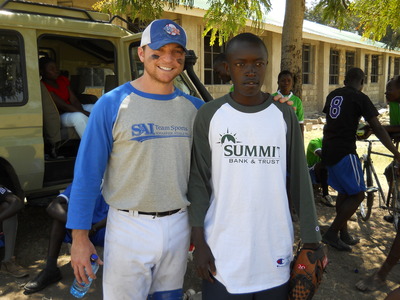
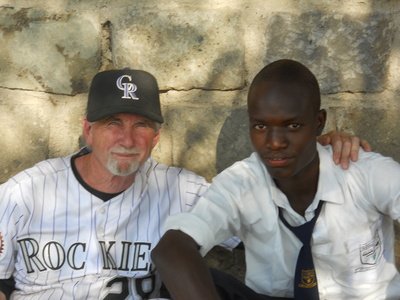
The kids did very well at the tournament, given the brief exposure they have had to baseball. A lot of them can really hit. Defensive skills, especially outfield skills keeping the ball in front of them on these fenceless fields, are a struggle. We are starting to see more good infield plays, both mental and physical. One girl retrieved a ball way out in center field and fired it to third base. I swear she threw it more than 200 feet. They had a lot of fun and there was a lot of socializing between the teams.
After the tournament is one of our favorite times, because by then the kids are all pretty comfortable with us and they like to talk, ask serious questions, clown around, take pictures, beg us to come back, and have fun. Their personalities come out like blossoms in a tropical garden.
Our most successful team so far, from perhaps the best-funded school we work with, went home after the tournament by piling into the bed of a small Toyota pickup truck. There were 18 kids plus equipment in the back and a driver and two teachers in the front.
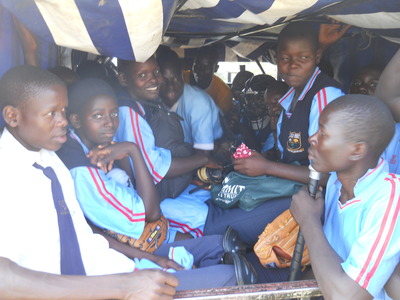
When the teams were gone, we had some time to visit with some of the younger kids who had swarmed us earlier in the week and greeted us eagerly whenever we went through town. I was sitting under a shade tree on a rock, showing them pictures on my Android. They identified animals in English, asked about my family, were fascinated by pictures of sea lions and laughed and imitated me when I demonstrated a sea lion bark. They could see tiny details even when the pictures were displayed with dozens on a page. Shortly after I started showing the pictures, I realized that kids on both sides of me were snuggled up with their faces on my shoulders and their fuzzy heads resting against my cheeks. They remained that way the whole time.
On Sunday the 22nd, as is becoming our tradition, we celebrated the orphans by serving them a “feast” of beans, rice, and ugali (a corn-meal staple). Afterward, we spent a lot of time with them, playing baseball and playing around. They were wearing the donated youth baseball shirts that we brought.
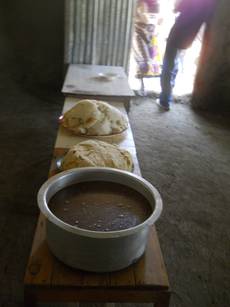
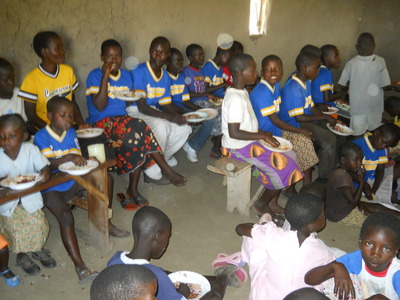

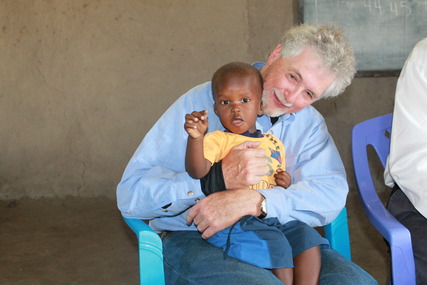
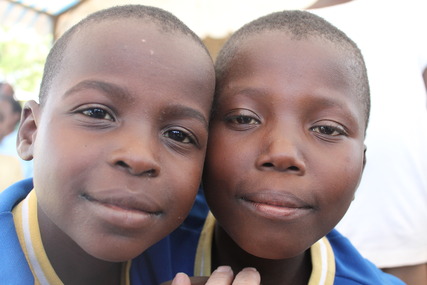
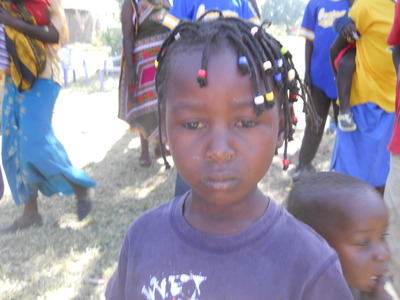
On Monday the 23rd, we received a special honor when Grephus, our friend, driver, guide and teammate, took us to Kakamega (an hour north of Kisumu) to play ball at his old school, hike in the rain forest, and show us his family home in a beautiful, hilly, lush area at the edge of the forest. Grephus and I had been dreaming of doing this since 2001. We also went to meet his mother. We learned that Grephus' mother was constantly taking in and raising numerous orphans over the years. Grephus' work with our project continues a family tradition of contributing productive adults to the community.
In our travels during the course of the week, we were sought out by two kids, Jombo and Kasma, who played ball with us the two previous years. In Kenya, you just show up and the people you want to see find you. These two became friends playing on rival teams. They get the game pretty well. We took them with us to several schools and they were a huge help. Veterans of the program such as these can become a vital part of the program by establishing some continuity between our visits.
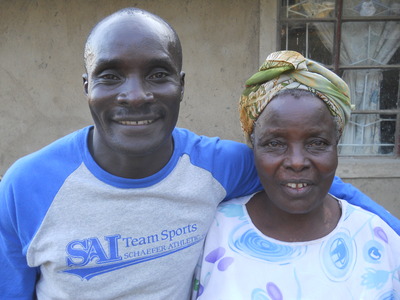
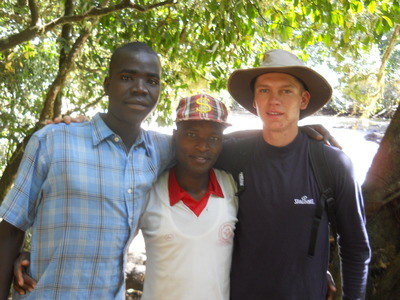
Jombo and Kasma asked to go with us to Kakamega. We readily agreed. They are a little older than Max and the three of them had a lot of fun listening to some kind of awful music. This was the first time either of them had been outside their home area and they were thrilled. This was the experience of a lifetime so far for them. Who knows what effect this will have on their future?
Along the way during week one, we went to the home of a young man whom we first met when he was working at a guest house where we stayed. He has an infant son named Jimy (which is what they call me). We got to hold the little guy. This is the kind of thing that continues to develop over time.
On Tuesday the 24th, we were off to the Masai Mara, about a five hour drive from Ahero, the last third of it on very rough roads. We stayed in a tent camp that is very comfortable. We renewed old friendships, saw young men who I sponsored over many years, and played ball with the Masai kids three times. Ralph was presented with Masai jewelry by the grateful mother of a boy he sponsors.
One afternoon we were throwing an American football with some of the camp staff. That night at the camp fire, they challenged us to a contest throwing “the Masai spear” (“Masai spear” being pronounced as one word, always preceded by “the”). Passing Masai men stopped to watch, compete, offer advice, and lend us their spears. Let's just say we “found out.” We all had a lot of fun.
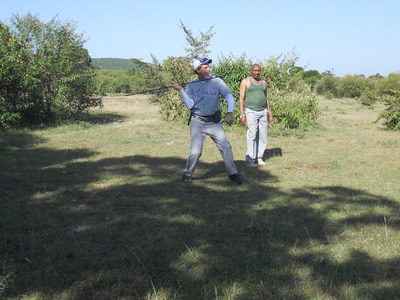
One of our Masai friends is Jackson. I met him in 2000, when he was a scrawny, shy little boy in tattered clothes missing his right hand. Many kids needed sponsors, but Jackson faced extraordinary obstacles. Today, Jackson is well on his way to becoming a leader in community development.
One day, Max was feeling sick so he sat out the baseball clinic. He laid down under a tree, put his hat over his face and dozed off. He was startled awake when he felt something against the outside of his hat. It was a Masai cow licking his hat. He realized he was surrounded by a herd of wandering cattle.
Everyone we encountered at the Mara, from camp staff, to community leaders, to teachers to kids, implored us to come back.
We also saw some great wildlife including the legendary “Big Five” (Lion, Leopard, Rhino, Buffalo and Elephant). Grephus has got to be the best driver and guide in the world.
The trip was culminated on Friday evening with dinner at Grephus' home in Nairobi. We had a chance to talk some more with Selena about local efforts to help the slum residents, and to visit with Grephus' children, Zenna and Kike (“Kee' Kay”). Being invited to his home is a great privilege for us. The whole family rode along to the airport for fun.
Our team had a wonderful time together. There was strict enforcement of the “no whining” rule. Joking and wise-cracking was relentless and a necessary release of the emotional weight of this experience. There were some pretty good pranks—like chasing Drew with a live chicken, convincing Max that the tent camp conditions would be horrible and he wouldn't be able to use a bathroom for three days, and telling Ralph that our Baptist hosts were about to baptize him. Others cannot be mentioned here.
We each experienced common yet very individualized reactions to this trip. We are still trying to comprehend what our visits really mean to the students and kids with whom we interact.
The Assistant Principal at Kochogo Secondary School, a lady whom we met and had given a ride home on a previous trip, introduced us to three orphan students whom we are sponsoring. She asked us into her office, and told us how important the work we are doing is to her school. She explained they have a lot of orphans, and being with people from the outside who care about them gives her students a sense of purpose and a beacon of hope. She strongly urged us to come back as often as possible.
We heard similar comments from every teacher and administrator we met. The only complaint we got was that we don't come back frequently enough.
I find myself continually amazed by the personalities that emerge from the masses of children we meet in Africa. Each and every one of these children has a heart and soul, feelings and dreams, pain and joy, talents and potential. Can we, as a human race, really afford to waste the talents and abilities of these young people? This isn't just Kenya's problem. It isn't just Africa's problem. It is the world's problem. It is our problem.
Those of us who read this letter cannot solve all the problems. But we can start. There are countless Margaret Oburas. They are everywhere in Kenya, needing only a spark from us that ignites a passion and transforms a young person's life.
As I reflect on this experience, the realization overwhelms me that my last observation works both ways, which is the true beauty of this project. Within each of us also lives a passion needing only the spark of an experience like this to ignite it and transform our lives.
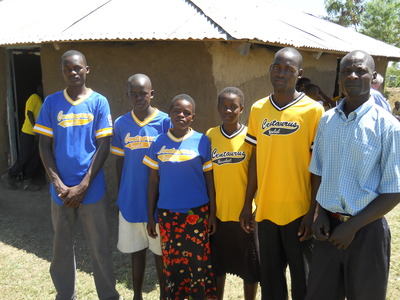

It sounds strange, but it is becoming harder to say goodbye to friends in Africa. I cannot wait to return. Even more, I cannot wait to share this adventure of body, mind and spirit with some of you in the future.
More information appears throughout this website. Tax-deductible donations can be made through PayPal or by check—visit our donations page for details.
Sincerely,
Jim Cederberg, President
42/22: Humanity Through Baseball Foundation, Inc.